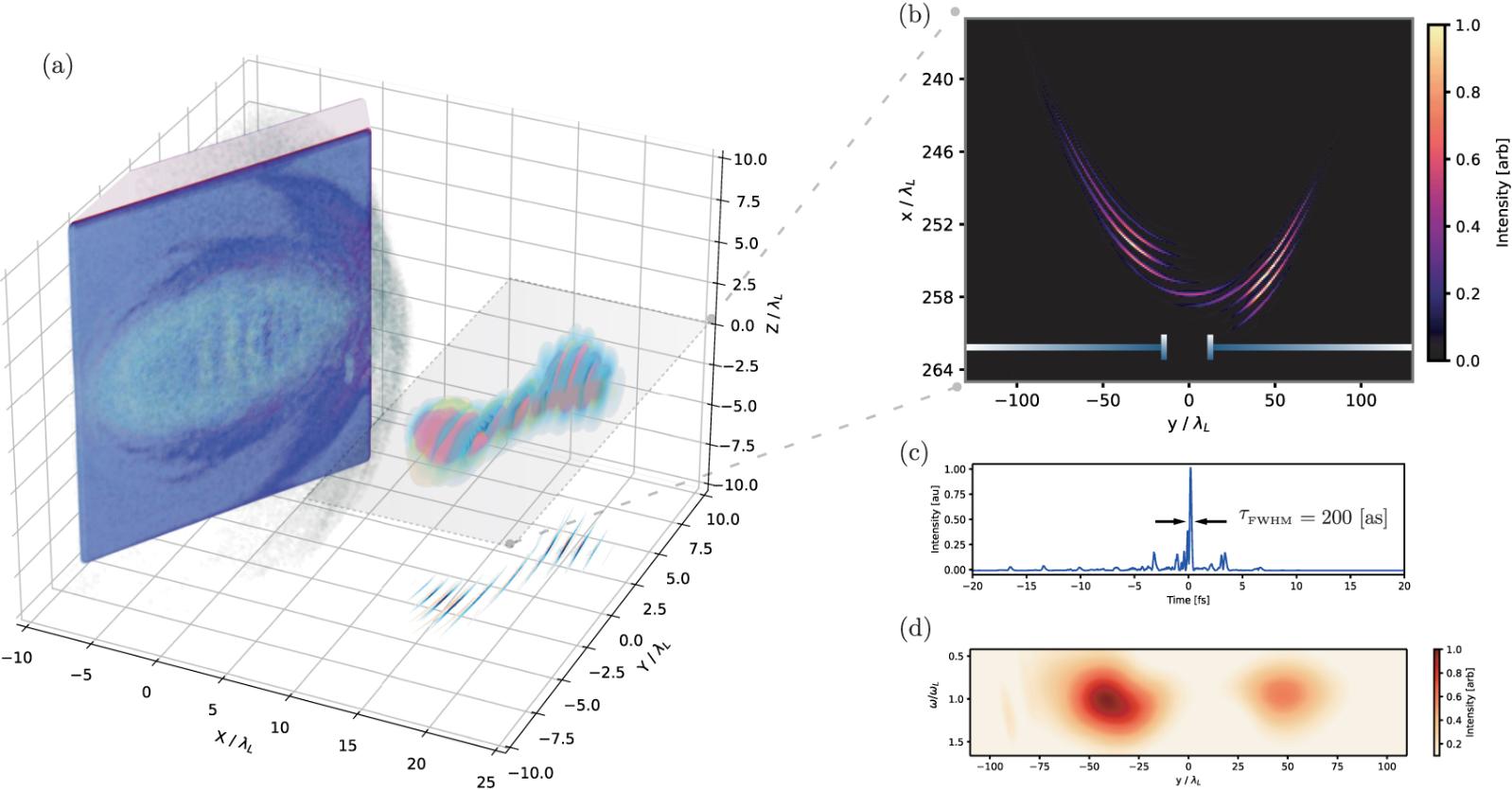Attosecond Pulse Production
Researchers at QUB’s Centre for Light-Matter Interactions (CLMI) are using NI-HPC to explore new methods of producing bright, attosecond-scale flashes of light which can be used to study some of nature’s fastest processes1.
The motion of electrons inside atoms and molecules occurs on the attosecond timescale - an incredibly brief period of time on the order of a billionth of a billionth of a second. This ultrafast world of electrons is now accessible to scientific observation due to recent breakthroughs in the production of correspondingly short flashes of light which can be used to probe their dynamics. The development of these ‘attosecond light pulses’ has unlocked the study of a myriad of physical and chemical processes and was recently recognised by the award of the 2023 Nobel Prize in Physics2.
Researchers at CLMI investigate methods of generating exceptionally bright attosecond pulses using laser-produced plasmas which would extend the potential applications of attoscience still further3. In this scheme, an extremely powerful laser pulse is tightly focused onto a solid target which undergoes rapid ionisation to form a dense plasma. During the subsequent laser-plasma interaction, electrons are periodically accelerated to velocities approaching the speed of light and a series of bright, attosecond pulses of light are emitted. As described in their recent publication1, researchers at CLMI used the EPOCH code 4,5 on Kelvin2 to simulate an alternative scenario in which the interaction is driven by the superposition of two identical laser pulses that are separated both angularly and temporally. Such plasma physics simulations can take tens of thousands of CPU core-hours to complete and therefore codes such as EPOCH employ MPI parallelization so that they can be finished in a reasonable timeframe using HPC resources such as Kelvin2. Here, the researchers found that their novel approach yielded a single, bright attosecond pulse which is more suitable for attoscience applications than the series of pulses that are typically generated via laser-produced plasmas. Having employed Kelvin2 to investigate the feasibility of this ‘non-collinear gating’ scheme, the researchers are now planning to demonstrate this experimentally within the next year.

Simulation results showing the production of an isolated attosecond pulse via non-collinear gating. Figure from Ref. [1]. Shared using CC-BY-4.0 Licence
References:
[1] J.P. Kennedy, B. Dromey, M. Yeung, Isolated ultra-bright attosecond pulses via non-collinear gating, New J. Phys. 24, 113004 (2022); DOI 10.1088/1367-2630/ac9b80
[2] Press release. NobelPrize.org. Nobel Prize Outreach AB 2023. Sun. 8 Oct 2023. <https://www.nobelprize.org/prizes/physics/2023/press-release/>
[4] https://github.com/Warwick-Plasma/epoch
[5] T. D. Arber et al., Plasma Phys. Control. Fusion 57 113001 (2015); DOI 10.1088/0741-3335/57/11/11300
Acknowledgements:
Ref. [1] was supported via EPSRC Grants EP/P010059/1 and EP/P016960/1.
Further information:
Dr Mark Yeung: m.yeung@qub.ac.uk
